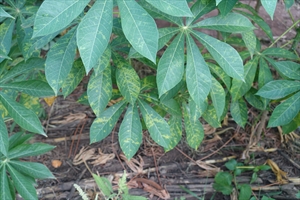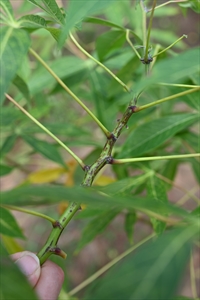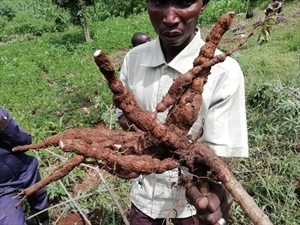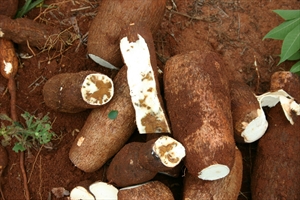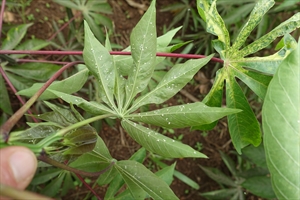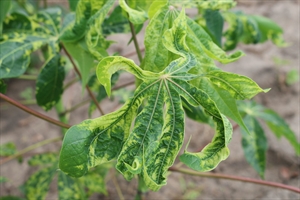- Restricted. Predominantly, East and Central Africa, uncommon in West Africa. It is NOT recorded in Oceania.
- Serious disease of cassava, wild cassava and weeds. Annual losses from Kenya, Malawi, Tanzania, Uganda put at US$750 million, increasing as CBSV spreads across the cassava belt of Africa.
- Symptoms vary according to variety and environment. Yellow patches occur along secondary veins, sometimes joining together. Streaks appear on the young green stems. Roots are often smaller than normal, show constrictions, and have dark brown dry rots in the flesh. Dieback occurs in the most susceptible varieties.
- Spread over a few metres by whiteflies, Bemisia argentifolia (see Fact Sheet no. 284). Longer distances by exchange of planting material. Infestations over 1000 masl now common, possibly due to increase in whitefly populations.
- Biosecurity: prohibit unregulated cassava introductions; follow FAO Technical Guidelines for cassava germplasm moved internationally; use only virus-tested tissue cultures.
- Cultural control: plant cuttings only from healthy plants; preferably, use certified cuttings; rogue infected plants; at harvest, collect and destroy infected plants.
- Chemical control: avoid broad-spectrum insecticides - repeated use will promote resistant whitefly populations; use white oil, horticultural oil or soap (see Fact Sheet no. 56).

